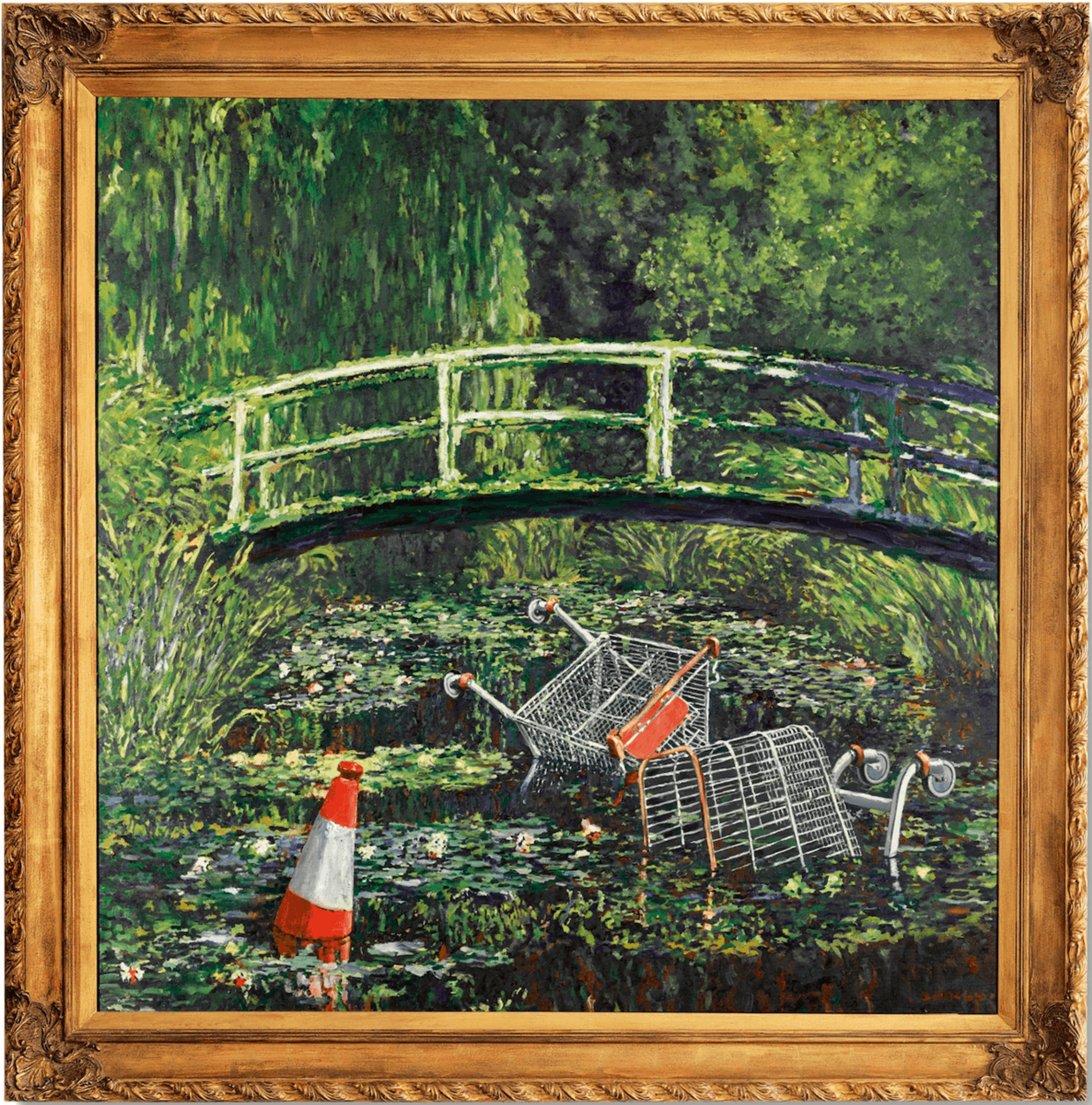Creative Interior Designs: Oil Paintings for Sale
Creative Interior Designs: Oil Paintings for Sale
Blog Article
Checking out Everything About Oil Paintings: A Guide to Recognizing Their Appeal and Value
Oil paintings have actually mesmerized audiences for centuries, offering a glimpse into the artistic mastery of numerous ages. Their rich background is intertwined with innovative strategies and extensive psychological expression. Recognizing the products and methods behind these artworks can boost admiration. Furthermore, the market for oil paintings provides opportunities for capitalists and collectors alike. As one discovers this fascinating world, the inquiry emerges: what makes an oil painting truly beneficial?
The History of Oil Paint: A Trip Via Time
Although oil painting has origins that go back to ancient times, it truly prospered during the Renaissance, when musicians uncovered its versatility and rich color capacity. Early examples can be traced to the 7th century, with methods progressing notably throughout societies. The medium ended up being prominent in Northern Europe in the 15th century, especially through the jobs of artists like Jan van Eyck, who pioneered its use for in-depth realism and vibrant colors. This period noted a separation from tempera paints, enabling higher deepness and appearance. As oil painting spread, it influenced countless artists, leading to masterpieces by distinguished numbers such as Leonardo da Vinci and Rembrandt. The medium's tradition proceeds, forming the art globe well right into modern times.
Comprehending Oil Paints: Materials and Techniques
As musicians check out the world of oil paints, they experience a varied selection of products and strategies that define this tool. The key parts of oil paint consist of pigments, which provide color, and drying oils, such as linseed, that bind the pigments and help with application. Different ingredients can modify the paint's appearance and drying out time, enhancing convenience. Methods like glazing, where transparent layers are developed, and impasto, which involves applying thick paint, allow for different aesthetic effects. Additionally, the usage of brushes, palette knives, and even fingers can produce distinct structures and coatings. Understanding these materials and techniques enables artists to totally express their creative thinking and achieve the desired impact in their art work.
The Duty of Color in Oil Paints
Shade plays a pivotal function in oil paints, influencing both aesthetic charm and psychological resonance. Comprehending color concept fundamentals, including the relationships in between colors, can enhance a musician's capacity to share state of mind and atmosphere. In addition, mastering color blending techniques enables greater depth and splendor in a paint's scheme.

Color Theory Fundamentals
Recognizing shade theory is important for musicians dealing with oil paints, as it creates the foundation for creating unified and visually interesting compositions. Shade theory incorporates the study of just how shades interact, the shade wheel, and the connections between key, second, and tertiary shades. Musicians use complementary shades to improve contrasts and produce focal factors, while comparable shades advertise unity and cohesiveness within a piece. In addition, the principles of trendy and warm shades affect the understanding of depth and space in a paint. Realizing these concepts enables musicians to control color properly, leading the visitor's eye and connecting their desired message. Mastery of color concept ultimately improves an artist's capability to share emotions and ideas via their job.
Emotional Effect of Color
The psychological impact of color in oil paintings plays an important duty in just how audiences view and attach with artwork. Colors evoke certain sensations and moods, influencing the customer's emotional state. Warm shades like oranges and reds can develop a sense of heat and energy, while great tones such as blues and greens commonly evoke peace or self-questioning. Artists tactically select color combinations to boost narrative components, guiding the audience's psychological trip. The saturation and comparison of shades better intensify these results, attracting interest and producing focus. Eventually, the interplay of colors in oil paints not only improves their aesthetic charm however likewise works as a powerful tool for emotional expression, enriching the viewer's experience and analysis.
Color Mixing Techniques
While several elements of oil painting add to the general structure, mastering color blending methods is crucial for attaining wanted impacts and depth. Color mixing can be come close to via different methods, consisting of the subtractive and additive processes. Additive blending involves incorporating colors of light, while subtractive mixing relies upon pigments, where colors mix to create brand-new tones. Artists typically use a minimal scheme to develop harmonious works, recognizing the partnerships between key, secondary, and tertiary colors. Strategies such as glazing and scumbling additionally boost deepness and brightness. By skillfully blending shades, an artist can evoke emotions, produce prime focus, and accomplish a sense of realistic look, eventually boosting the paint's psychological and visual effect.
Famous Oil Painters and Their Iconic Works

Famed for their proficiency of shade and technique, oil painters have created some of the most celebrated artworks in background. Popular artists like Vincent van Gogh mesmerized audiences with his emotive brushwork in "Starry Night," while Claude Monet's "Impression, Sunup" prepared for Impressionism. Leonardo da Vinci's "Mona Lisa" remains an enduring sign of imaginative wizard, showcasing his skill in catching human expression. Rembrandt's "The Evening Watch" highlights his ingenious use of light and shadow. Other significant numbers consist of Pablo Picasso, who transformed modern art with his vibrant trial and error in jobs like "Les Demoiselles d'Avignon," and Georgia O'Keeffe, whose dynamic depictions of landscapes and blossoms helped specify American innovation. Each artist's unique design added considerably to the oil painting landscape.
How to Evaluate the Quality of an Oil Painting
Evaluating the quality of an oil paint entails a mindful analysis of workmanship methods, in addition to an analysis of color and make-up. Observing brushwork, layering, and the application of paint can disclose the musician's skill level. In addition, the interaction of shades and the general setup of aspects contribute considerably to the paint's aesthetic worth.
Assessing Workmanship Techniques
A precise analysis of craftsmanship strategies is vital for figuring out the quality of an oil paint. Critics should initially examine the application of paint; thick, textured brushstrokes might suggest an experienced hand, while excessively consistent applications could suggest an absence of depth. oil paintings for sale. The layering strategy is also crucial; the presence of glazes and differed density can enhance brightness and intricacy. Additionally, the quality of the products made use of, such as the canvas and pigments, plays a considerable duty in resilience and overall visual. Interest to information in elements like sides and shifts between shades mirrors the musician's commitment to their craft. Eventually, these methods add to the painting's emotional effect and market price, working as indications of the artist's skill and intent
Evaluating Shade and Structure
While examining the quality of an oil painting, one have to focus on the interplay of shade and make-up, as these elements are fundamental to the artwork's total impact. Color choices can develop and stimulate emotions mood; therefore, the artist's scheme ought to be examined for harmony and comparison. A healthy structure directs the customer's eye and develops a sense of unity. Artists frequently utilize methods like the rule of thirds or leading lines to boost visual interest. Furthermore, making use of light and darkness can include depth, enhancing the three-dimensionality of the painting. Inevitably, a successful oil paint weds color and composition, involving the visitor and welcoming a deeper appreciation of the musician's vision and method.
Caring for and Preserving Oil Paintings
Proper treatment and preservation of oil paintings is vital for maintaining their integrity and long life. To shield these art work, it is important to display them far from direct sunshine, which can trigger fading and discoloration. Keeping a steady environment with regulated temperature and moisture additional aids in preventing damages. Cleaning need to be done carefully using a soft, completely dry cloth, staying clear of any type of harsh chemicals that might harm the paint or varnish. Normal evaluations for indicators of degeneration, such as flaking or cracking, are suggested. When delivering or keeping oil paints, proper cushioning and framing are needed to avoid physical damage. Inevitably, persistent treatment adds to the visual allure and value of oil paintings gradually.
The Market for Oil Paintings: Investing and gathering
Recognizing the market dynamics for oil paints is crucial for financiers and collectors alike. The worth of these artworks is affected by various variables, including the musician's credibility, historic importance, and current fads. Collectors usually seek items that resonate directly while considering prospective recognition in worth. Public auctions and galleries work as primary places for trading, with costs changing based upon need and rarity. Spending in oil paintings calls for study right into the marketplace, along with an understanding of credibility and provenance. Furthermore, arising musicians might offer opportunities for significant returns, while developed names can regulate high rates. more info Generally, a critical strategy to accumulating can generate both visual enjoyment and monetary benefits.

Frequently Asked Inquiries
What Are the Environmental Influences of Oil Painting Products?
The environmental effects of oil painting products consist of the release of unpredictable organic substances (VOCs), hazardous waste generation, and source extraction for pigments. These factors contribute to air pollution and environmental deterioration, elevating concerns among ecologically conscious musicians and consumers.
Just How Do Various Canvases Impact Oil Painting Outcomes?
Different canvases affect oil painting results significantly. Surface area, absorbency, and structure high quality can alter paint application, drying times, and shade vibrancy. Musicians typically pick specific canvases to achieve preferred impacts and boost their imaginative expression.
Can Oil Paintings Be Restored if Damaged?
If damaged, Oil paintings can undoubtedly be recovered. Professional conservators utilize various methods to repair splits, clean surface areas, and address staining, making certain that the artwork retains its original beauty and value for future generations.
What Are the Indications of an Initial Oil Painting?
The indications of an original oil paint consist of noticeable brush strokes, structure variants, and an unequal canvas weave (oil paintings for sale). Additionally, authenticity may be validated with provenance, signatures, and the visibility of a varnish layer one-of-a-kind to oil tools
Exactly How Has Innovation Influenced Modern Oil Painting Techniques?
Innovation has substantially influenced modern-day oil painting methods by presenting digital devices for preparation, improved products for texture and durability, and on-line platforms for sharing and selling art, thus increasing artists' innovative opportunities and target market reach. Oil painting has origins that date back to ancient times, it truly flourished throughout the Renaissance, when artists discovered its convenience and abundant color potential. The psychological effect of color in oil paints plays a crucial duty in exactly how visitors perceive and link with art work. While many elements of oil paint add to the total composition, mastering color mixing methods is necessary for attaining desired results and depth. Evaluating the top quality of an oil painting entails a careful analysis of craftsmanship strategies, as well as an analysis of color and structure. While reviewing the high quality of an oil paint, one should concentrate on the interaction of shade and make-up, as these components are basic to the art work's total effect.
Report this page